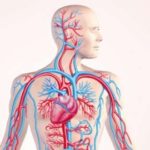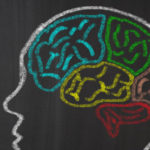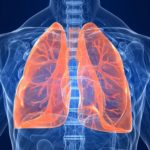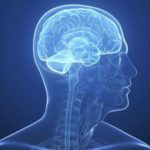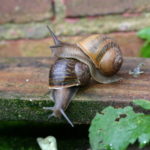30 interesting facts about the human heart
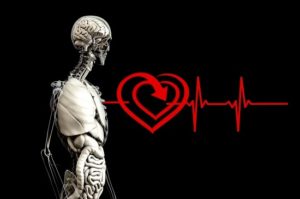 It is the heart that is the most important part of the human body, along with the brain. It has been working continuously since the moment when we are in the mother’s womb and has been beating for life, until the last breath. But even this muscle, the most hardy in the body, needs proper care, and attention to it will help prolong life.
It is the heart that is the most important part of the human body, along with the brain. It has been working continuously since the moment when we are in the mother’s womb and has been beating for life, until the last breath. But even this muscle, the most hardy in the body, needs proper care, and attention to it will help prolong life.
On average, the human heart makes 4,200 contractions per hour, 100,800 per day, 36 million 792 thousand per year, and about 2.4 billion contractions in the average human 64-year life span.
Within five minutes, it pumps five liters of blood.
In an hour, a person’s heart makes an average of 4200 beats and pumps 300 liters of blood.
About 5% of all blood that is in the human body is constantly located in this body.
The heart begins its work in the fourth week of the fetal life of a person, and does not stop until death.
The fetal heart rate is approximately 140 beats per minute. By the 12th week of fetal life, it is already able to pump 28 liters of blood per day.
The heart length of an adult varies from 10 to 15 cm, but more often it is somewhat less, about 12-13 cm.
The heart of a woman weighs an average of 250-300 grams, and men – 300-350 grams.
A typical faucet in the kitchen must be turned on continuously for more than 40 years in order to let in as much water as blood is pumped through a person’s heart with an average life expectancy.
A trained heart is capable of more powerful contractions, has a large reserve power, and works much more economically. Its efficiency is higher. It is reduced less often, and in the intervals between contractions it is better resting and supplied with blood. In an untrained person, during a dormant period, the pulse is approximately 70 beats per minute, while in an athlete in the normal state – 42 beats per minute.
Now researchers are actively exploring the possibility of transplanting the hearts of other animals, such as pigs, to humans.
There are moments of respite in the work of the heart when it is “silent” between contractions. During its lifetime it “rests” for about two decades.
In the course of each “beat”, the heart contracts and unclenches rhythmically. First, the atria contract, pumping blood into the ventricles, then they send blood to the aorta and pulmonary artery.
Recent research by Harvard Medical School, published in Science Dayly, has proven that poor ecology is one of the most negative factors for heart function.
The duration of the general cycle of blood circulation in the human body takes an average of 23-24 seconds.
Heart diseases throughout the history of mankind have claimed more lives than all wars on Earth combined.
For one reduction, a person’s heart ejects an average of 60 milliliters of blood. This amounts to 420 milliliters per minute, more than 25 liters per hour, 600 liters per day, more than 200 thousand liters per year
One cubic millimeter of our blood includes a huge number of red blood cells – there are 4.5-5.5 million of them. These bodies are continuously created in the body, and every 120 days they are completely updated.
A beating of the heart appears when the heart valves are closed.
According to statistics, most heart attacks occur on Mondays, between 7 and 10 o’clock in the morning.
At the time of the highest voltage, the heart rate can reach 200-250 beats per minute. Within a minute, such a heart is able to send over 40 liters of blood to the circulatory system.
The heart has its own electrical impulses, that is, it can beat even outside the body. True, only on condition that he has a sufficient supply of oxygen.
The heart supplies blood to all organs with the exception of the cornea, which is more than 80 trillion cells. Subcutaneous fat makes it difficult for the heart to work, forcing it to pump blood through fatty tissues, which is very difficult.
In the human heart there are 4 chambers, and the cockroach has as many as 13. It is the heart of the cockroach that formed the basis for creating a new prototype of an artificial heart for humans.
The ancient Egyptians believed that the heart and other internal organs can be moved through the body using a volitional decision.
At the beginning of the 19th century, the French doctor Rene Laennec constantly received complaints from patients who did not like that he put his ear to his bust, listening to the heartbeat. Then the young doctor invented a stethoscope so as not to embarrass his visitors.
The work of the heart is regulated by the nervous and endocrine systems. The nervous system can increase or decrease the frequency and strength of heart contractions. Hormones do the same, for example, when we experience or rejoice.
The first successful heart transplant was made on December 3, 1967 by a South African surgeon Christian Barnard to a patient Louis Washansky. True, the patient lived only 18 days after the operation.
The ancient Greek physician Erasistrat of Chios, who lived in (304-250 BC), was the first to express the opinion that the heart performs the function of a pump in the body.
The ancient Roman physician Galen claimed that the heart produces blood. And only in 1616, the Irish biologist William Harvey proved that there is a limited amount of blood in the body, and that it moves in a circle.
